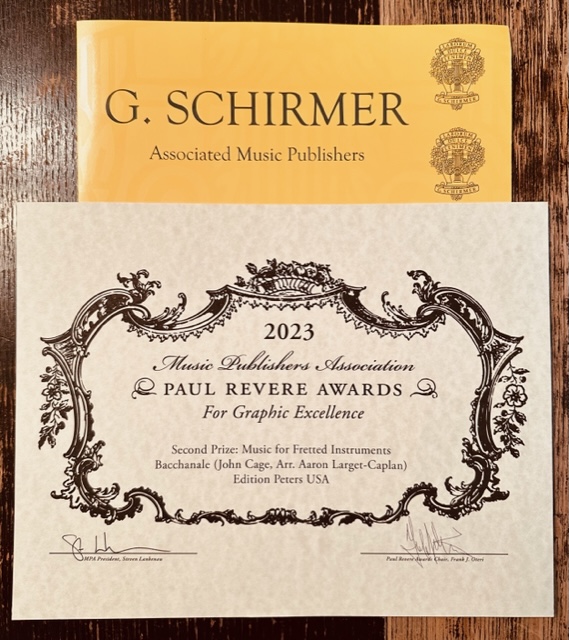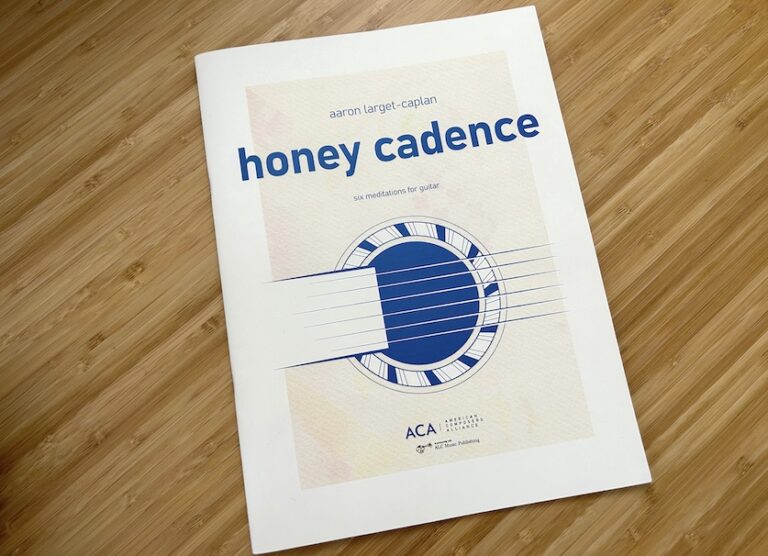
Bacchanale for two prepared guitars by John Cage (1912-1992)
Arranged by Aaron Larget-Caplan
Published by Edition Peters
Score and recording info or purchase at Aaron Larget-Caplan’s Store.
Big thanks to Aaron Larget-Caplan for sending me his arrangement of John Cage’s Bacchanale for two prepared guitars published by Edition Peters. This is an excellent arrangement filled with rigourous rhythmic schemes and the prepared aspect transfers to guitars quite well due to the somewhat different soundscape. It recently won a Paul Revere Award from the Music Publishers Association of the United States. Above is a video of the work via Larget-Caplan’s YouTube or see his John Cage album for a recording of this work as well as other Cage arrangements via his store. Here’s an excerpt about Bacchanale from his press release:
Originally a solo work for prepared piano written in 1948 for trendsetting dancer and choreographer Syvilla Fort, Bacchanale requires the performer to “prepare” the piano. Fort asked Cage for a work for percussion ensemble, but there was not enough room on stage, so Cage experimented by putting items in the piano itself like screws, bults, washers and insulation. Bacchanale is the first of his works to do such preparations, and he would go to win a Guggenheim Fellowship and an Award from the National Academy of Arts and Letters for his invention of the prepared piano.
Below is a picture of the Paul Revere Award.

For a bit more context on this piece here’s some info via johncage.org
Bacchanale was Cage’s first work for prepared piano, composed in response to a request for a “dance accompaniment” by fellow faculty member at the Cornish School, Syvilla Fort. As per Fort’s request for a work with an African “inflection,” Cage intended to write a piece for percussion ensemble. However, given that the performance space was too small to accommodate a battery of percussion instruments, and that he had only a traditional grand piano with which to work, he began experimenting with objects placed inside the piano – under and between its strings – attempting to alter its sounds. The final preparations are quite simple: weather-stripping, pieces of rubber, and screws and bolts. The prepared piano became a signal instrument for Cage. Years later, in 1949, after the N.Y. premiere of his magnus opus for the instrument, Sonatas and Interludes (1946-48), Cage received citations from both the Guggenheim Foundation and the National Academy of Arts and Letters for having “extended the boundaries of music.”
Below is an example of a piano performance via Franco Foderà on YouTube chosen mainly for the close ups of the prepared piano:




